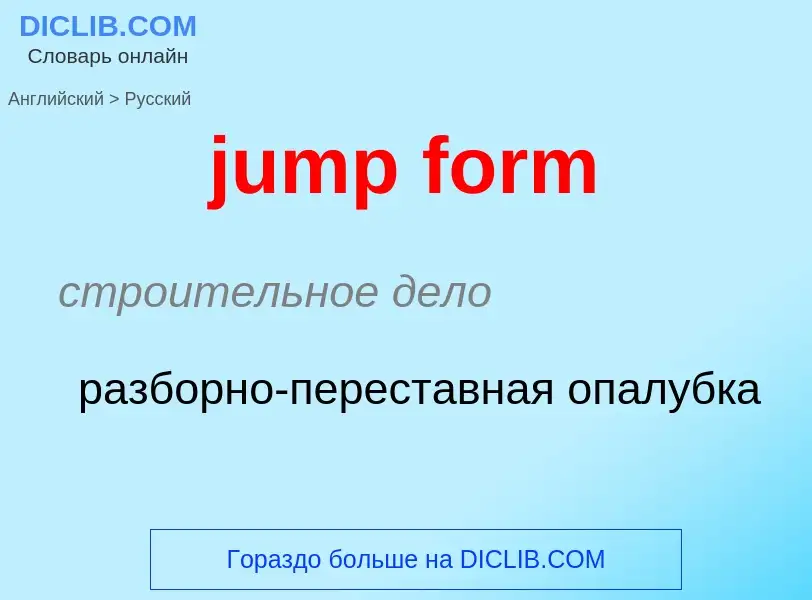Перевод и анализ слов искусственным интеллектом ChatGPT
На этой странице Вы можете получить подробный анализ слова или словосочетания, произведенный с помощью лучшей на сегодняшний день технологии искусственного интеллекта:
- как употребляется слово
- частота употребления
- используется оно чаще в устной или письменной речи
- варианты перевода слова
- примеры употребления (несколько фраз с переводом)
- этимология
jump form - перевод на русский
строительное дело
разборно-переставная опалубка
Определение
Википедия
A jump cut is a cut in film editing in which a single continuous sequential shot of a subject is broken into two parts, with a piece of footage being removed in order to render the effect of jumping forward in time. Camera positions of the subject in the remaining pieces of footage of the sequence should vary only slightly in order to achieve the effect. It is a manipulation of temporal space using the duration of a single shot, and fracturing the duration to move the audience ahead. This kind of cut abruptly communicates the passing of time as opposed to the more seamless dissolve heavily used in films predating Jean-Luc Godard's Breathless, which made extensive use of jump cuts and popularized the technique during the 1960s. For this reason, jump cuts are considered a violation of classical continuity editing, which aims to give the appearance of continuous time and space in the story-world by de-emphasizing editing, but are sometimes nonetheless used for creative purposes. Jump cuts tend to draw attention to the constructed nature of the film. More than one jump cut is sometimes used in a single sequence.
Continuity editing uses a guideline called the "30-degree rule" to avoid the appearance of jump cuts. The 30-degree rule advises that for consecutive shots to appear seamless and continuous in time, the camera position must vary at least 30 degrees from its previous position. Some schools would call for a change in framing as well (e.g., from a medium shot to a close up). The idea is to convey to the viewer a different point of view on the action but with the timeline of the action being continuous. Generally, if the camera position changes less than 30 degrees, the difference between the two shots will not be substantial enough, and the viewer will experience the edit as a jump in the position of the subject rather than a change of point of view, which is jarring.
Jump cuts, on the other hand, keep the camera's relationship to the subject the same but jump forward in time in the action.
Although jump cuts can be created through the editing together of two shots filmed non-continuously (spatial jump cuts), they can also be created by removing a middle section of one continuously filmed shot (temporal jump cuts).
Jump cuts can add a sense of speed to the sequence of events.

